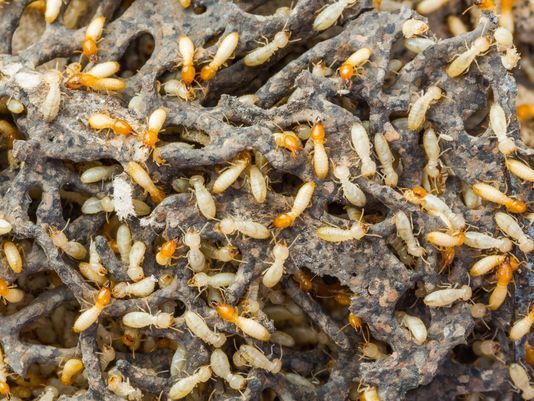Termites, like all cold blooded creatures, cannot survive within environments where temperatures fluctuate dramatically between extreme cold and extreme heat. The majority of termite species must remain within conditions as warm as 75 to 95 degrees fahrenheit in order to survive. Once the temperature rises to 100 degrees or dips below 25 degrees fahrenheit, termite life cannot be sustained. This may come as a shock to many people that assume termites are resilient enough to withstand even the most extreme fluctuations in temperature. After all, termites dwell in regions where temperatures rise well above 100 degrees. For example, several termite species dwell within the Sonoran Desert in the southwest United States. During the summer, the daily temperature in the Sonoran Desert often reaches levels in excess of 110 degrees. The Sonoran Desert is by no means the only area where termite life can exist without perishing from the extreme heat. So how is this possible? Luckily for termites, extreme heat can be avoided by locating relatively cool areas within an excessively hot environments.
Studies in Arizona and California that focused on subterranean termite survival in desert regions found that these insects avoid deadly heat levels by locating and exploiting shaded regions within desert environments. Furthermore, in order to avoid the desert heat, subterranean termites will venture deep beneath the sandy surface so that environments with more stable temperatures can be located.
Subterranean termites are well known for their ability to detect temperature gradients in the soil above them. In fact, some studies have shown that subterranean termites dwelling underground can sense “thermal shadows” cast by vegetation and structures located above ground. When these shadows are sensed, subterranean termites know they can safely rise to the surface in order to forage under the shadows protection.
Drywood termites that are not physically designed for subterranean activity can alter their location within a nest in order to save the colony from excessive heat. Most drywood termites infest logs within forested regions. Typically, colony activity occurs within the outer portions of a log, but the summer heat prompts drywood termite colonies into moving to the center of a log, as this is the coolest portion.
While termites are certainly vulnerable to high heat, they can normally survive even the hottest of environments by moving to cooler areas that are not accessible to most animals, or even insects for that matter. Termites also possess unique features that allow them to sense above ground temperatures, which is essential to their success at locating cellulose-rich areas of vegetation and structures that exist at the ground’s surface.
If you found yourself a victim of a termite infestation would you look into heat treatments?

